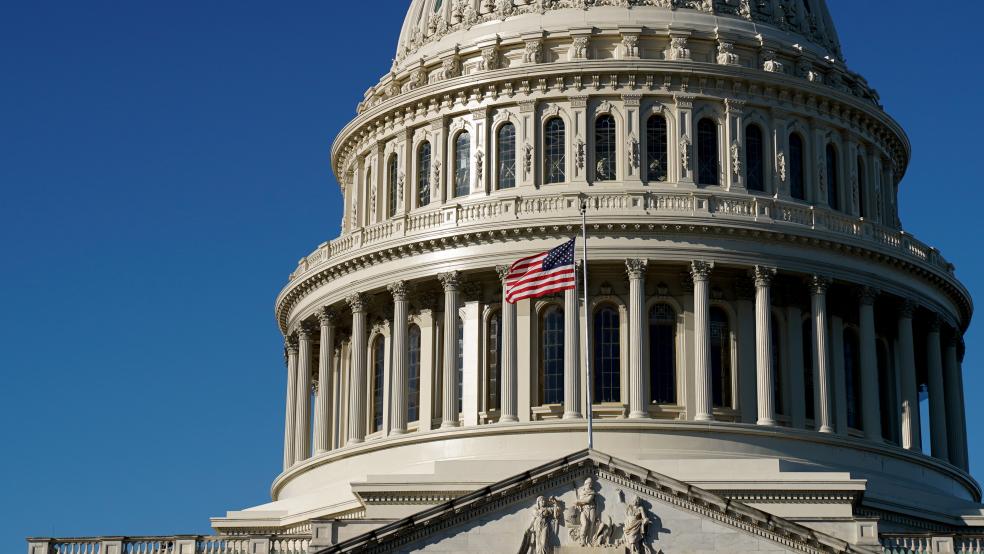The omnibus spending bill that appears on track to pass tonight includes all 12 annual appropriations bill for fiscal year 2022 along with more funding to support Ukraine and refugees fleeing the Russian invasion there.
The bill would provide $730 billion for non-defense spending and $782 billion for defense spending, with $743 billion of the latter amount slated directly for the Pentagon. Both defense and non-defense spending would increase by $42 billion relative to the previous year — a parity insisted upon by Republican lawmakers over the objections of progressives.
House Appropriations Committee Chair Rosa DeLauro (D-CT) hailed the 6.7% increase in non-defense funding as the largest in four years. And Senate Appropriations Chair Patrick Leahy (D-VT) said the bill “makes bold investments in critical areas that went underfunded or even neglected in the previous administration, including education, childcare, healthcare, the environment, science and research, and many more.”
Why it matters: “Even in the face of the disputes and delays, the $1.5 trillion spending bill still amounted to a major legislative victory in Washington,” The Washington Post’s Tony Romm and Marianna Sotomayor wrote. “Under President Biden, lawmakers had been operating under a series of temporary spending patches that generally have frozen the federal government at older funding levels. The approach meant the White House could not achieve its grandest ambitions to boost federal programs, including those that aid low-income families and respond to public health crises, despite issuing a budget last year that called for rejuvenating these efforts.”
But budget watchers decried the extraordinarily messy process in reaching this deal, which covers the fiscal year that began more than five months ago — and they warned about the spending increases. “This entire episode is a reminder of why we need to reform the budget process: the bill is almost 6 months late, unconstrained by discretionary spending caps, and not being considered in the context of an overall fiscal plan,” said Maya MacGuineas, president of the Committee for a Responsible Federal Budget, which advocates for deficit reduction.
What’s included on the defense side: The appropriations surpass the Biden administration’s budget request by about $30 billion, increasing by 6% over the 2021 fiscal year. The Navy is one of the biggest winners, Roll Call’s John M. Donnelly says, with $27 billion going toward shipbuilding. About $4 billion of that was unrequested and will go toward the construction of nine additional ships, including an Arleigh Burke-class destroyer and two Expeditionary Fast Transport ships. Another $900 million will go toward the purchase of 12 F/A-18 fighter jets that the administration did not request.
What’s included on the non-defense side: Highlights of the sprawling package include:
- Nearly $4 billion for rural development, including money for broadband internet services;
- $12.6 billion for the IRS, a $675 million increase from 2021 and the largest boost for the agency in two decades;
- $108 billion for the Department of Health and Human Services, a 12% increase;
- $140 billion for food aid through the Supplemental Nutrition Assistance Program;
- $24 billion for NASA, a roughly $730 million increase from 2021 but less than requested by the White House.
A return to earmarks: The bill also includes billions of dollars’ worth of earmarks, now called “member-directed spending,” for the first time since their use was eliminated in 2011.
Aid for Ukraine: The spending deal includes a supplemental bill (text here) that would provide $13.6 billion in aid for Ukraine and the American response to the Russian invasion. About $6.5 billion of that total would go to the Department of Defense, with $3 billion for rebuilding military stocks to replace equipment that has been sent to Ukraine, and $3.5 billion for troop deployments and intelligence efforts at U.S. European Command.
The State Department would receive nearly $4 billion, with funds targeting refugee support ($1.4 billion), regional assistance ($1.1 billion), foreign military financing ($650 million), economic aid ($647 million), diplomatic efforts ($125 million) and law enforcement ($30 million).
The U.S. Agency for International Development would receive nearly $2.8 billion, with the bulk of the funds ($2.6 billion) being used for disaster relief in Ukraine and surrounding countries.
The remaining funds, totaling roughly $300 million, would be distributed to a variety of federal agencies, including the Agriculture, Commerce and Energy departments for projects relating to aid, communications and oversight. About $120 million of the remaining funds would go to the Treasury and Justice departments for efforts relating to sanctions, trade and combatting potential Russian cyberattacks.
Overall, lawmakers intend to provide more than twice the Biden administration’s request for $6.4 billion in Ukraine aid. “Democrats and Republicans who have struggled to coalesce behind meaningful legislation to aid the Ukrainian cause are rallying around one of the few substantive tools available to them: sending money and weapons,” says Catie Edmondson of The New York Times.
Correction: This article was updated to correct the budget increase included for NASA.





